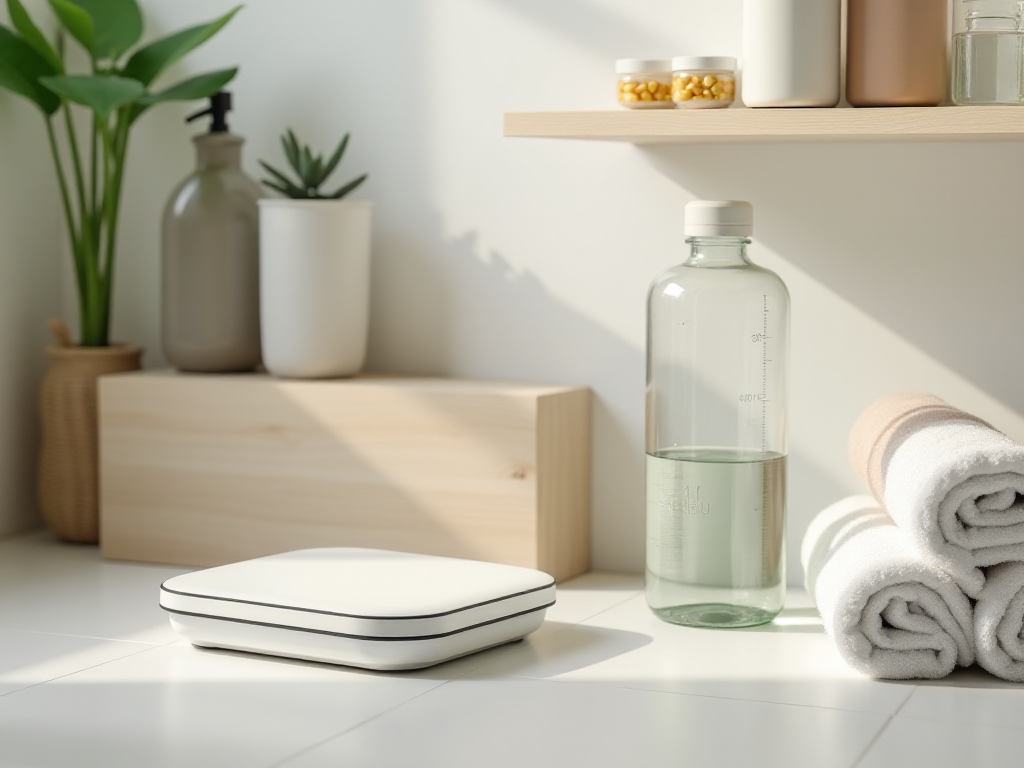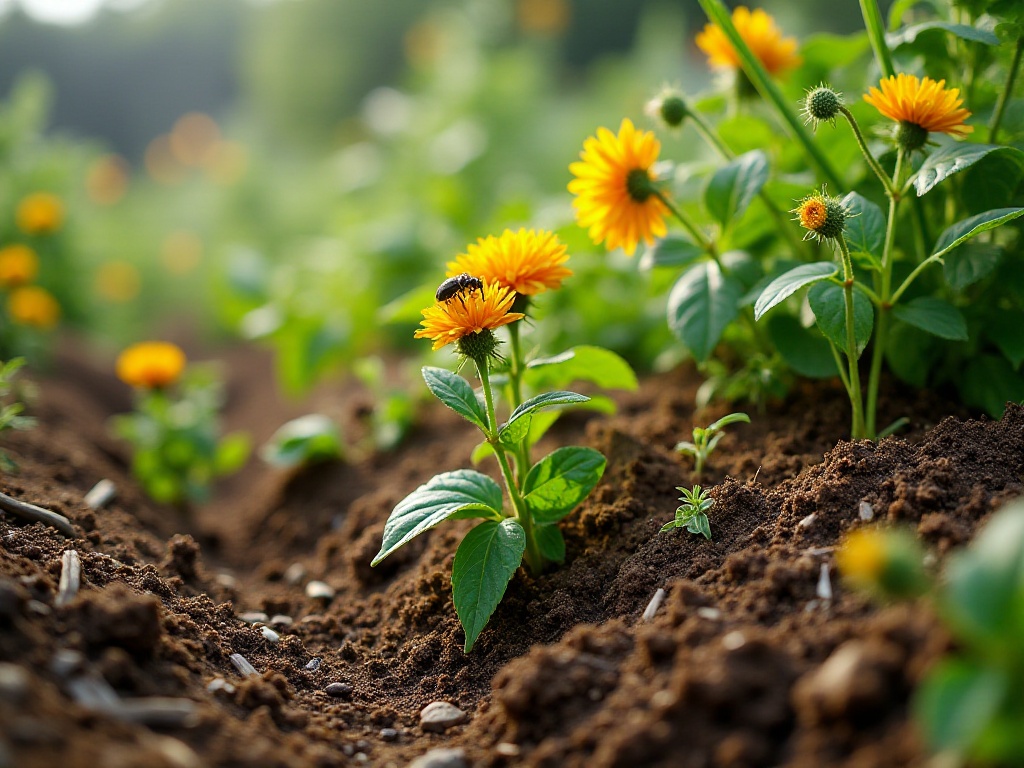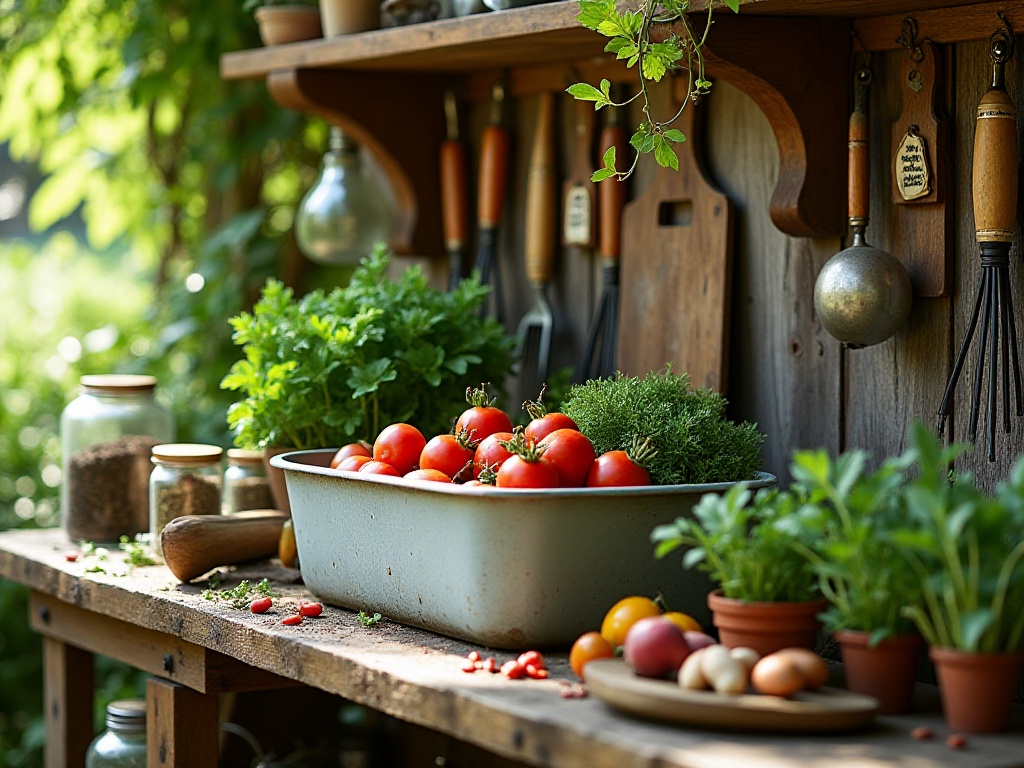
Opening Questions
Every time I see videos of other people's balconies filled with flowers and plants, I'm super envious! But when I think about how I managed to kill even succulents, I realize that gardening isn't easy at all. However, through continuous exploration and learning, I've finally found some super useful planting tips that I can't wait to share with everyone. Trust me, once you master these secrets, you can easily create your own vibrant little garden!
The Mystery of Seeds
To be honest, my first attempt at planting was a complete disaster. The seeds either wouldn't sprout, or would disappear just after showing their tiny heads. I thought I had a black thumb at first, but later discovered that those cute yet annoying little birds were the culprits! They would secretly snatch away my carefully planted seeds when I wasn't looking.
After some research, I discovered a particularly clever solution. I had a spare window screen at home, so I cut it to the appropriate size and covered the seeded area. To prevent it from being blown away by wind, I purposely placed small stones at the four corners. This way, sunlight and water could easily pass through the screen, but those greedy birds could only watch helplessly.
This method works incredibly well! Since then, my planted seeds have never mysteriously disappeared again. Plus, the screen prevents soil from being washed away by rain - killing two birds with one stone! I even discovered that the germination rate significantly improved under the screen's protection. Watching those little sprouts emerge and grow day by day brings an indescribable sense of achievement.

Light Tricks
When it comes to lighting issues, it's really a major concern for many novice gardeners. Especially for those of us living in high-rise apartments, the balcony's orientation and obstacles can affect plant growth. My balcony faces northeast, and in winter there's very little sunlight. Watching my plants droop day by day really broke my heart.
Later, I found a hydroponic system growing light online, which became my savior! This light not only simulates natural sunlight's spectrum but also has low power consumption, so there's no need to worry about electricity bills. I usually turn on the growing light before leaving for work in the morning and turn it off when I get home, ensuring plants get at least 8 hours of light daily.
Interestingly, I discovered that different plants have different light requirements. For example, my succulents particularly love strong light and turn beautifully red after just a few days under the growing light. Meanwhile, some foliage plants like ferns actually prefer diffused light, so I place them farther from the light.
After some practice, I developed a "three-layer lighting method": placing sun-loving plants closest to the growing light, shade-tolerant plants at the furthest end, and other plants in between. This way, each plant gets the light intensity that suits it best.

Smart Planting
The most exciting discovery I've made has to be about smart space utilization in planting. Initially, I just arranged plants in a single row, but gradually realized this was quite wasteful of space. When I started researching vertical planting, I accidentally discovered an amazing combination - planting carrots between other plants.
The brilliance of this method lies in the fact that carrot roots grow vertically, so they don't compete much with surrounding plants. Plus, carrot leaves can provide shade, helping protect less sun-tolerant plants from sunburn. Most amazingly, when it's harvest time, pulling out the carrots naturally loosens the soil - achieving multiple benefits at once!
Speaking of planting, I have another particularly useful tip. I discovered that chopsticks make the perfect planting tools. I specifically marked a pair of chopsticks with several measurements at 1cm, 2cm, and 3cm. This way, every time I plant seeds, I just need to poke a hole with the chopsticks to ensure the seeds are planted at just the right depth.
This chopstick marking method has really helped me a lot. Previously, I often planted seeds too deep, resulting in many failing to sprout. Now with this simple tool, planting depth has become very precise. I've also discovered that different seeds need different planting depths - generally, the smaller the seed, the shallower it should be planted.
Besides planting depth, I also pay special attention to the distance between seeds. At first, I always planted them too close together, resulting in plants crowding each other and not growing well. Later, I drew a grid on the flowerpot to ensure each seed had enough growing space.
Nutrient Supply
When it comes to plant care, nutrition is the most important issue. When I first started planting, I naively thought watering was enough. Until one day, when I saw my plants' leaves turning yellow and growing poorly, I realized that water alone isn't enough - they need various nutrients too.
While searching for natural fertilizers, I discovered the treasure that is coffee grounds. After drinking coffee each day, I dry the grounds and collect them. These coffee grounds are rich in phosphorus, potassium, nitrogen, and magnesium - elements essential for plant growth. Even better, they can repel slugs and snails. Since using coffee grounds, my plants have obviously grown more vigorously, and their leaves have become more lush green.
For my "priority protection" tomatoes, nutrient supply is absolutely crucial. Tomatoes are real "gluttons," especially during flowering and fruiting when they need lots of nitrogen. I found that alfalfa pellets are the best nitrogen source, as they release nitrogen at a moderate rate without causing nutrient excess.
To help my tomatoes grow better, I also specifically collect eggshells and oyster shells. After drying and crushing these shells, I sprinkle them on the soil surface, which both supplements calcium and improves soil structure. Since using this method, my tomatoes haven't experienced any fruit splitting or blossom end rot.
Regarding fertilization, I've also developed a "morning and evening difference" principle. For morning fertilization, I choose fast-acting water-soluble fertilizers so plants can fully absorb them throughout the day. For evening fertilization, it's better to use slow-release organic fertilizers, allowing plants to absorb them gradually.

Conclusion and Reflection
Looking back on this gardening journey, there have really been both laughs and tears. From initially being completely overwhelmed to now being able to skillfully master various planting techniques, this process has made me deeply realize that gardening is really like taking care of a child. It requires patience, attention to detail, and most importantly, persistent love.
The first thing I do every morning is go to the balcony to check on my plants. Watching them stretch their branches and leaves in the sunlight, bloom beautiful flowers, and bear sweet fruits brings a satisfaction that's impossible to describe in words. Even when setbacks occur, like plants getting sick or being eaten by insects, these are all necessary experiences in the growth process.
I particularly enjoy sitting on the balcony in the evening, watering and pruning my plants. When the breeze blows, the leaves rustle, and the air is filled with the fresh scent of soil and plants - these moments are truly healing. Sometimes when work pressure is high, I just come to the balcony, look at the greenery, touch the leaves, and my whole being can calm down.
For friends who want to start planting, my advice is to begin with one or two simple plants. You can first choose some easy-to-grow ones, like pothos or ivy for foliage plants, or mint and basil for herbs. Gradually accumulate experience while caring for these plants, then try some more challenging varieties.
Remember, every plant expert started as a beginner. Setbacks are inevitable in the planting process, but what's important is maintaining enthusiasm for learning and an exploratory mindset. While caring for plants, we not only harvest beautiful flowers and greenery but also gain inner peace and satisfaction.
Let's discover life's beauty together through planting and create our own little happiness. Trust me, as long as you're willing to invest time and thought, even the most ordinary balcony can become a vibrant green space full of life. Planting a seed is planting hope - let's look forward to it taking root, sprouting, and growing strong!
Next
After 3 Months of Completely Changing My Diet, I Found My Quality of Life Improved by 80%
A comprehensive guide to healthy living, covering balanced nutrition principles, regular exercise routines, and essential wellness maintenance methods to help establish scientific eating habits and a healthy lifestyle
Beginner's Guide to Balcony Gardening: Creating Your Urban Garden Dream from Scratch
A comprehensive guide covering gardening basics, soil maintenance, plant care techniques, and practical gardening tips to help beginners create and maintain a healthy garden while mastering essential cultivation methods
Growing a Garden on My Balcony: 20 Essential Tips for Beginner Vegetable Gardeners
Explore practical gardening techniques covering garden space planning, seeding methods, sustainable practices, and tool management, helping gardeners optimize planting space, protect seedlings, and maintain gardens in an eco-friendly way
Next

After 3 Months of Completely Changing My Diet, I Found My Quality of Life Improved by 80%
A comprehensive guide to healthy living, covering balanced nutrition principles, regular exercise routines, and essential wellness maintenance methods to help establish scientific eating habits and a healthy lifestyle

Beginner's Guide to Balcony Gardening: Creating Your Urban Garden Dream from Scratch
A comprehensive guide covering gardening basics, soil maintenance, plant care techniques, and practical gardening tips to help beginners create and maintain a healthy garden while mastering essential cultivation methods

Growing a Garden on My Balcony: 20 Essential Tips for Beginner Vegetable Gardeners
Explore practical gardening techniques covering garden space planning, seeding methods, sustainable practices, and tool management, helping gardeners optimize planting space, protect seedlings, and maintain gardens in an eco-friendly way

